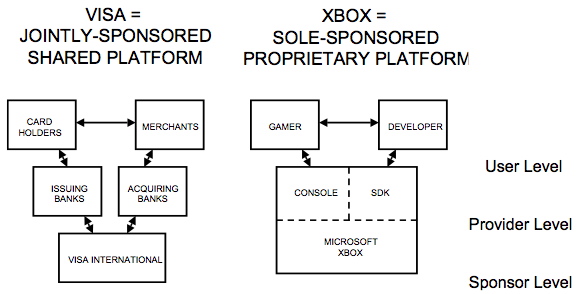At minute 4:30 in LCD Soundsystem’s ‘Yr City’s A Sucker‘ a tightly bound harmonic ‘Aaah’ and the shout that arises from beneath it speaks volumes about what the media business often means to people.
“What we want is what you want. What you want is a case of the hah hah hah’s.”
It’s like casinos and gamblers, drug dealers and addicts — a sort of degenerative codependence.
The ‘Aaah’ is brief. It sounds nice and pleasant and makes you think everything is happy here, production and consumption joined for the good of all.
Behind it, however, is an angry or perhaps exhausted shout that breaks through just for a moment at the end. It’s the musical representation of The Narrator’s struggle in Fight Club:
“We’re consumers. We are by-products of a lifestyle obsession. Murder, crime, poverty, these things don’t concern me. What concerns me are celebrity magazines, television with 500 channels, some guy’s name on my underwear.”
The media business is not the only space in which creativity wants to escape the dominant and manipulative incumbent power structures. Finance. Healthcare. Government. Law.
Product design is a great example. In a recent TechTalk at The Guardian Matt Webb argued that people want to use physical objects to connect with people. Social networking is a feature that can be unlocked from within everything we touch.
Nearly as interesting as his philosophy and his prototypes is the fact that Matt was able to build these things on his own. With very little cash he circumvented traditional product manufacturing to make these new ideas real.

After his talk one of the staff asked whether the entire last century was a weird anomaly in the history of mankind. He wondered whether the means of production had become so sophisticated and expensive that they ultimately crushed man’s natural tendency and desire to build things. That’s a good question.
Did the machines and systems and processes and subsequently their impact set the bar for success so high that many people stopped trying?
Lucas Gonze explores this thinking in terms of music. Clay Shirky sees similar patterns in television.
You could argue that the second industrial revolution was the beginning of the great numbing of humanity. While we changed the world at unprecedented scales, the consequence was a systematic reduction of the noise that comes from wider participation.
Human messiness was suppressed to pursue perfect design.
But maybe the noise of participation has music within it that our ears don’t yet understand.
Jeremy Keith got me thinking about some of this further in his dConstruct keynote. He talked a bit about evolution, randomness and power. Once a power law is established it puts a large percentage of the participants in the system at a disadvantage.
Those systems undoubtedly created huge opportunities and changed lives dramatically, frequently for the better, but the indirect costs are becoming more clear today.
In another song called ‘Yeah‘ on the LCD Soundsystem album, James Murphy challenges people to wake up. He repeats ‘Yeah’ over and over like a mindless chant. He doesn’t sound interested or excited. He just agrees as if he lost the will to disagree. And then he breaks out of the trance for a moment and says:
“Everybody keeps on listening in. Nobody listening up.
Everybody keeps on talking about it. Nobody’s getting it done.
I’m tired, tired, tired now of listening, listening… knowing that the ship’s gotta run.”
The optimist hopes forces such as the Internet will reengage the world and empower people to do things they felt excluded from doing before, to participate again and to add to the collective experience of humanity.
The pessimist fears that people are being played by markets designed to take from them and that they are failing to recognize the impact of consuming the goods sold to them…that we are complicit in the growth of the forces that hurt us.
Fred Wilson sees opportunity across all markets to use the Internet as a way to empower people again. He writes about the wider strategy in the investments he makes at Union Square Ventures:
“[The Internet] is taking power away from existing large institutions and pushing it out to smaller entities and often all the way to individuals. In the process it is building up new institutions (such as Google), but the net result appears to be a distinct shift of ‘power to the people.'”
In Adam Greenfield’s insightful essay ‘Waiting for the Whirlwind‘ (via Tim O’Reilly) he articulates some of the deeper fears in America that cause and result in the nomination of someone like Sarah Palin to such incredible political heights.
“The things that endear this onetime nowhere-burg mayor to Americans are indicators that a whole lot of people think tomorrow came too soon…Where they were once called to dream and to believe that their best days as a community still lay ahead, [mainstream Americans] are now at war with the future.”
If Palin was a surprise to anyone then they weren’t paying attention when California voted in a seemingly unqualified feel-good entertainer to govern the region….twice. We elected one of them President…twice.
Palin simply reflects a common desire to maintain the co-dependence of our current political structures.
I have to agree with one of the comments posted in response to Mr. Greenfield’s essay where Daniel Erwin challenged people to participate usefully in whatever this trend is about rather than run away and point fingers.
“Don’t be one of those people who tries to stop the train because most of the world is “crazy” and values things you (and I) don’t understand. Just keep doing your work and you’ll do much better than all this fearful complaining.”
The test for the next century may play out in the way we engage our diverse natures to advance as a whole or rather as many parts of a whole. What do we advance toward? I’m not sure it matters…as long as lots of people are participating and that we recognize how to make corrections dynamically along the way.
 James McLurkin studies and builds swarming robotics which are inspired by an obsession with insects. Ants, for example, make lots of mistakes, dropping food and stepping on eachother, but they recognize signals around them that give them clues as to what decisions to make and thus accomplish amazing things as a whole.
James McLurkin studies and builds swarming robotics which are inspired by an obsession with insects. Ants, for example, make lots of mistakes, dropping food and stepping on eachother, but they recognize signals around them that give them clues as to what decisions to make and thus accomplish amazing things as a whole.
The mathematical theory behind his swarming robots is derived from research on distributed algorithms — the idea that problem solving can be tackled by different systems on a network.
It’s about zooming out, abstracting beyond our differences so that individual uniqueness becomes a point of leverage for something bigger collectively instead of worrying too much about the future which is guaranteed to be full of errors in judgment no matter what we do.
Imagine if Google chose not to index less popular web sites or perhaps only the left-leaning political sites or maybe only scientific research documents. They could have focused on eliminating the noise entirely.
Instead, a gigantic market grew around Google’s search engine because they delivered on the expectation that everything on the Internet can be found there, no matter how uninteresting or useless or potentially offensive the unique individual parts of the whole collection seemed to be.
Google embraced the noise. They didn’t care to be perfect. And now the opportunity before them seems nearly boundless.
 Silly trophies. These worked perfectly. You can keep it on your desk. It makes no sense to anyone else. And it reinforces the idea that the recognition is for the work itself, not for winning a competition. We did hand out a couple of Flip cameras and Make Magazine generously offered some free subscriptions for the hardware hacks, but the emphasis was clearly on the hackers and their hacks, not the idea of ‘winning’.
Silly trophies. These worked perfectly. You can keep it on your desk. It makes no sense to anyone else. And it reinforces the idea that the recognition is for the work itself, not for winning a competition. We did hand out a couple of Flip cameras and Make Magazine generously offered some free subscriptions for the hardware hacks, but the emphasis was clearly on the hackers and their hacks, not the idea of ‘winning’.
 Actually, it’s not inconceivable that
Actually, it’s not inconceivable that 


